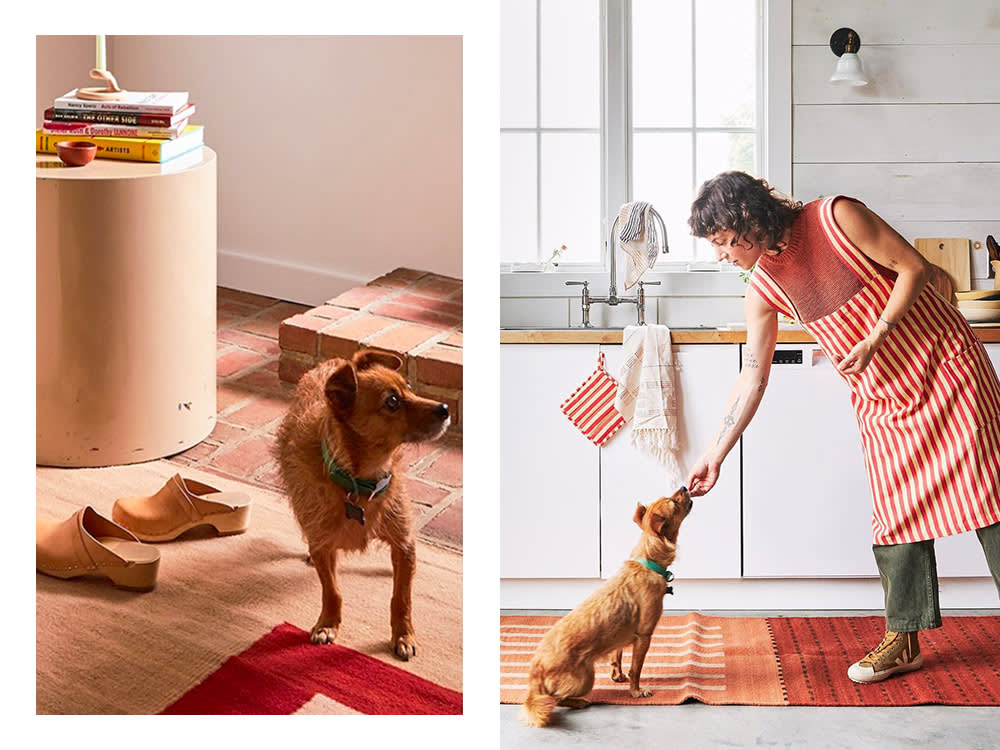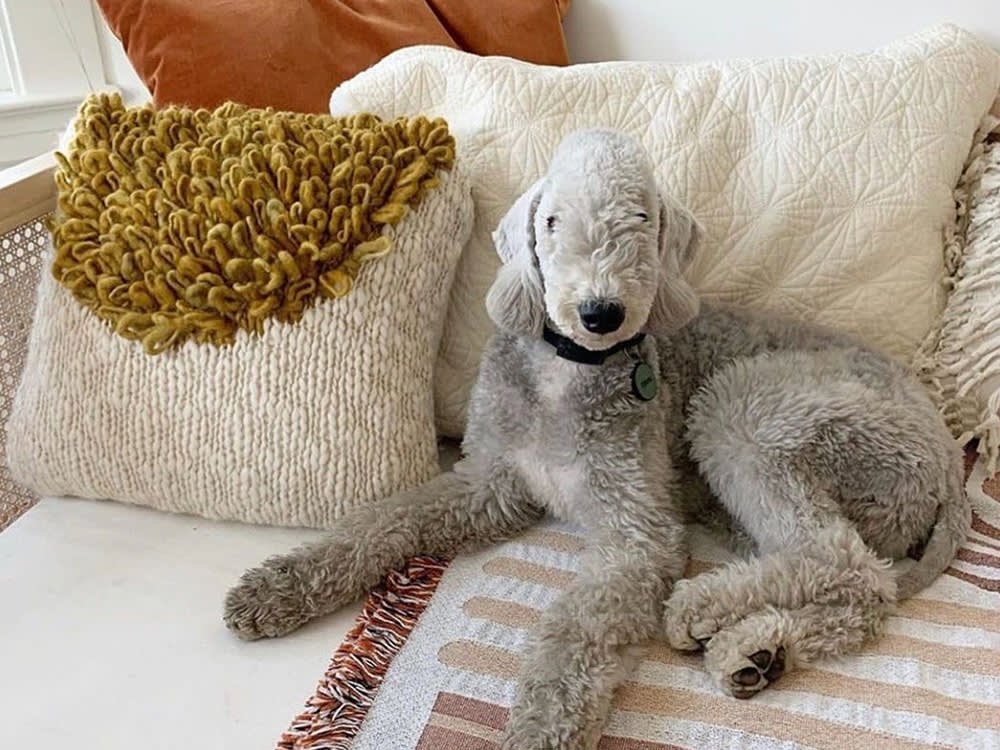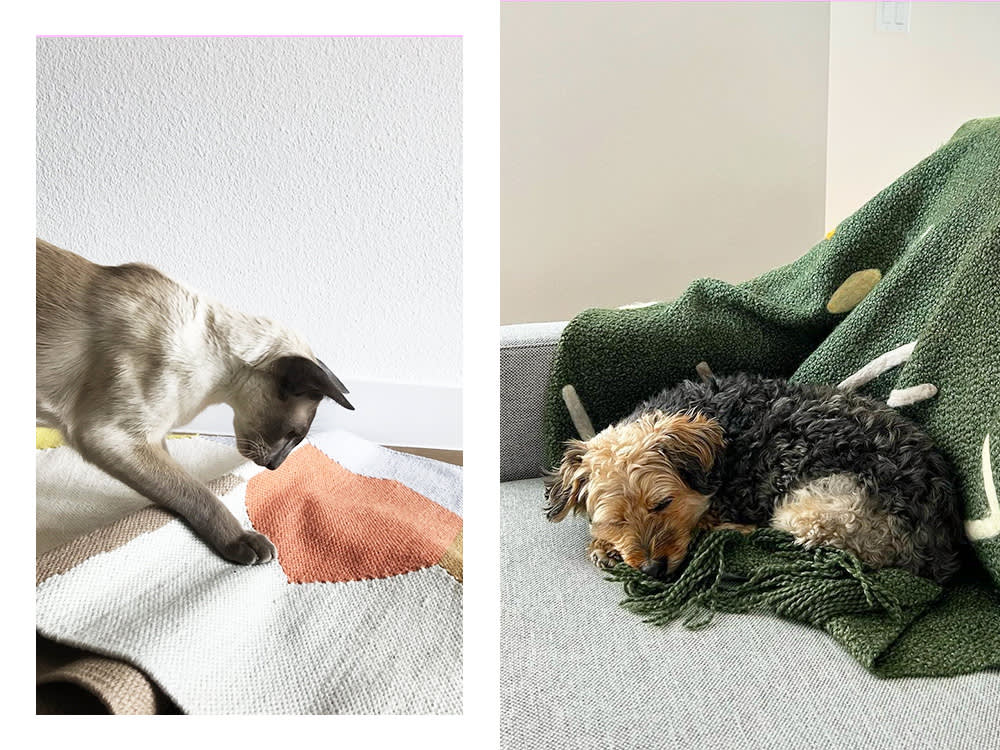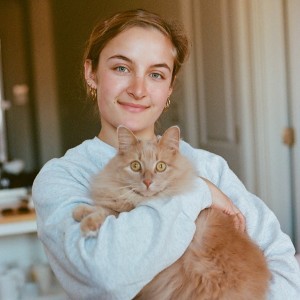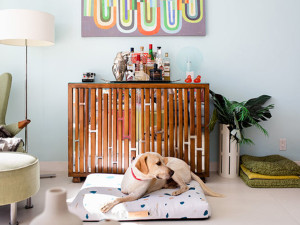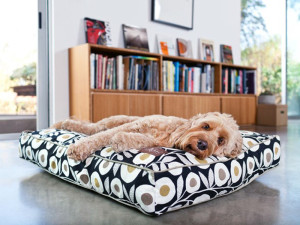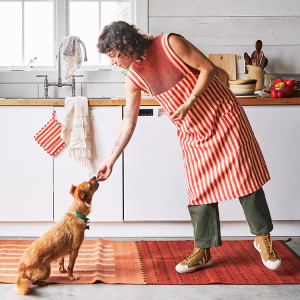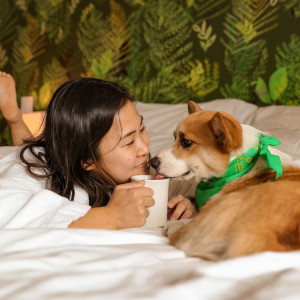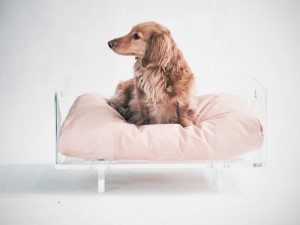MINNA’s Striped Beds Are the Prettiest Place for Pets to Snooze
Founder Sara Berks on the origins of her textile-forward brand’s ethical mission and artisan craftsmanship.
When you buy a mattress, you scour over different brands, their reviews, and what makes one different from the next (truly, who cares by the time you’re done?). You cost-compare and consider payment plans or whether you want to shell out what could easily be several months of student loan payments. As the Sleep Foundationopens in new tab has reminded us in every mattress-sale commercial ever, we humans spend approximately 1/3 of our lives in bed. Well, your pet spends about half their day or more sleeping, so you also want to find the right place for them to curl up (and be thankful they aren’t taking up all the space on your brand-new overpriced mattress).
For cozy-cloud, aesthetically pleasing dog bed finds, you’ll want to start with MINNAopens in new tab. The nine-year-old Hudson, New York-based brand is a queer-owned business comprised of a team of artists, creators, and thinkers. With ethics at the center of her mission, MINNA’s founder, Sara Berks, created a business that helps pet parents access sustainable products while uplifting the artisans who make them.
These days, MINNA produces everything from throw blankets for the living room to table runners for the kitchen, the heart of the brand lies in its line of (mostly striped) dog bedsopens in new tab. Made with 100-percent washable cotton by pedal-loom weavers in San Antonio Palopó, Guatemala, MINNA’s collection of reversible dog beds exemplifies the brand’s commitment to sustainability and supporting local makers. Each bed’s design is thoughtfully named after a MINNA staff member’s pet, but Berks’s own pup, Soba, has the coveted title of Studio Dog.
MINNA’s mission of manifests in their simple and coveted homewares, including our pups’ resting places. Berks spoke with Kinship about cutting out the corporate middle man to ensure wage fairness, the hustle culture of NYC, and how being a dog person influences MINNA’s designs.
How much do you spend on your pet per year?
Your shop, MINNA, is now based in upstate New York, but you previously worked in Brooklyn. Is there something about the Hudson Valley that you find fosters creativity? How does it compare to being a creator in NYC?
I moved upstate almost seven years ago after a decade in Brooklyn. I started MINNA there, but it wasn’t until I got upstate that I could afford space and really propel MINNA forward. There’s an incredibly creative community here that certainly fosters more creativity, and there’s also an entrepreneurial spirit here. There’s less pressure of a hustle than in NYC that allows for space to create in a different way. At least for me, I can have a stressful day at work, but the drive home (or the walk into the backyard) brings me back to center.
What inspired you to make products for pets?
I’m a dog person, and I’ve always wanted to make something for furry friends. My main concern was making something that was durable while also being beautiful. We developed a strong fabric that can withstand washing and some scratching!
Do you currently have any pets? Have you always been a pet person?
Yes, I have a dog named Soba and a cat named Bear. Bear is actually bigger than Soba, which is an amusing balance. I grew up with a Beagle named Clarissa (yes, I named her after [the 1990s sitcom] Clarissa Explains It All), and I also adopted a dog in Brooklyn named Max.
How do you ethically source materials? Do you have craftspeople you regularly work with?
Our entire business model is built on long-term relationships. We work directly with our artisan partners to develop all of our products and regularly check in about what’s working and what can be improved. These types of relationships set you up to work more ethically and equitably. Some of the groups we met on my first product development trip in 2015.
You’ve shared that your work is inspired by Bauhaus and feminist works. Do you have a background in art history or activism that led you to incorporate these principles into your art?
My background is actually in graphic design and learning about the Bahaus [movement] was so important to my development as a designer and an artist. As a queer woman who spent my 20s in Brooklyn, I was surrounded by radical ideas about how to live and work in the world. When I started MINNA, it was important to me to stay true to those roots and ensure that my business did more than make money — but also had a positive impact, whether through creating job opportunities or redistributing funds.


